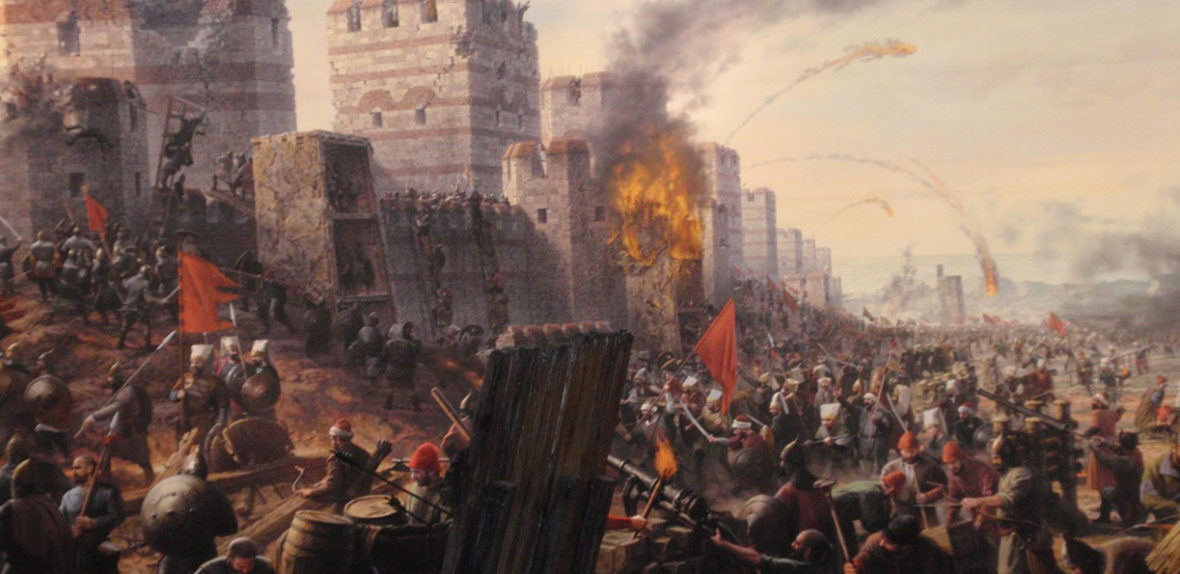Mehmed II was an Ottoman Sultan who ruled first for a short time from August 1444 to September 1446, and later from February 1451 to May 1481. At the age of 21, he conquered Constantinople and brought an end to the Byzantine Empire. Take a look below for 30 more awesome and interesting facts about Mehmed the Conqueror.
1. Mehmed continued his conquests in Anatolia with its reunification and in Southeast Europe as far west as Bosnia.
2. He is considered a hero in modern-day Turkey and parts of the wider Muslim world.
3. Among other things, Istanbul’s Fatih district, Fatih Sultan Mehmed Bridge and Fatih Mosque are named after him.
4. Mehmed II was born on March 30, 1432, in Edirne, then the capital city of the Ottoman state.
5. His father was Sultan Murad II and his mother was Human Valide Hatun, born in the town of Devrekani, Kastamonu.
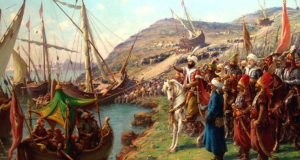
6. When Mehmed II was eleven years old, he was sent to Amasya to govern and thus gain experience, as per the custom of Ottoman rulers before his time.
7. Sultan Murad II also sent a number of teachers for him to study under. This Islamic education had a great impact in molding Mehmed’s mindset and reinforcing his Muslim belief.
8. He was influenced in his practice of Islamic epistemology by practitioners of science, particularly by his mentor, Molla Gurani, and he followed their approach.
9. The influence of Akshamsaddin in Mehmed’s life became predominant from a young age, especially in the imperative of fulfilling his Islamic duty to overthrow the Byzantine empire by conquering Constantinople.
10. In Mehmed’s first reign, he defeated the crusade led by Janos Hunyadi after the Hungarian incursions into his country broke the conditions of the truce of Peace of Szeged.
11. Mehmed’s first campaigns after Constantinople were in the direction of Serbia, which had been an Ottoman vassal state since the Battle of Kosovo in 1389.
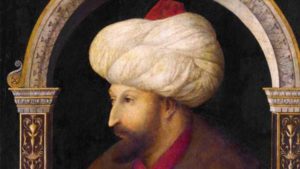
12. Mehmed II introduced the word “politics” into Arabic from a book he published and claimed to be the collection of political doctrines of the Byzantine Caesars before him.
13. He gathered Italian artists, humanists and Greek scholars at his court, allowed the Byzantine Church to continue functioning, ordered the patriarch Gennadius to translate Christian doctrine into Turkish, and called Gentile Bellini from Venice to paint his portrait as well as Venetian frescoes that are varnished today.
14. He collected a vast amount of books, which included works in Greek, Persian and Latin.
15. Mehmed invited Muslim scientists and astronomers, such as Ali Qushji, and artists to his court in Constantinople, started a university, built mosques, waterways, and Istanbul’s Topkapi Palace and the Tiled Kiosk.
16. Around the grand mosque that he constructed, he erected eight madrasas, which, for nearly a century, kept their rank as the highest teaching institutions of the Islamic sciences in the empire.
17. Mehmed II allowed his subjects a considerable degree of religious freedom, provided they were obedient to his rule.
18. After his conquest of Bosnia in 1463, he issues the Ahdname of Milodraz to the Bosnian Franciscans, granting them freedom to move freely within the Empire, offer worship in their churches and monasteries, and to practice their religion free from official and unofficial persecution, insult or disturbance.
19. His standing army was recruited from the Devshirme, a group that took first born Christian subjects at a young age and destined them for the sultan’s court.
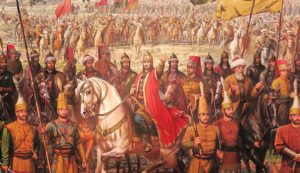
20. Within Constantinople, Mehmed established a millet, or an autonomous religious community, and appointed the former Patriarch Gennadius Scholarius as a religious leader for the Orthodox Christians of the city.
21. Mehmed II consolidated power by building his imperial court, the divan, with officials who would be solely loyal to him and allow him greater autonomy and authority.
22. He transitioned the empire away from the Ghazi mentality that emphasized ancient traditions and ceremonies in governance and moved the empire towards a centralized bureaucracy largely made of officials of devsirme background.
23. Mehmed II took the step of converting the religious scholars who were part of the Ottoman madrasas into salaried employees of the Ottoman bureaucracy who were loyal to him.
24. Once Mehmed II had created an Ottoman bureaucracy and transformed the empire from a frontier society to a centralized government, he took care to appoint officials who would help him implement his agenda.
25. His first grand vizier was Zaganos Pasha, who was of devsirme background as opposed to an aristocrat.
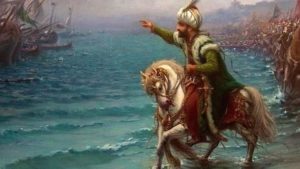
26. Mehmed was the first sultan who was able to codify and implement kanunname solely based on his own independent authority.
27. He was able to later implement kanunname that went against previous tradition or precedent. This was monumental in an empire that was so steeped in tradition and could be slow to change or adapt.
28. He delegated significant powers and functions of government to his viziers as part of his new policy of imperial seclusions.
29. A wall was built around the palace as an element of the more closed era, and unlike previous sultans, Mehmed was no longer accessible to the public or even lower officials.
30. Mehmed’s viziers directed the military and met foreign ambassadors, which are two essential parts of governing especially with his numerous military campaigns.

